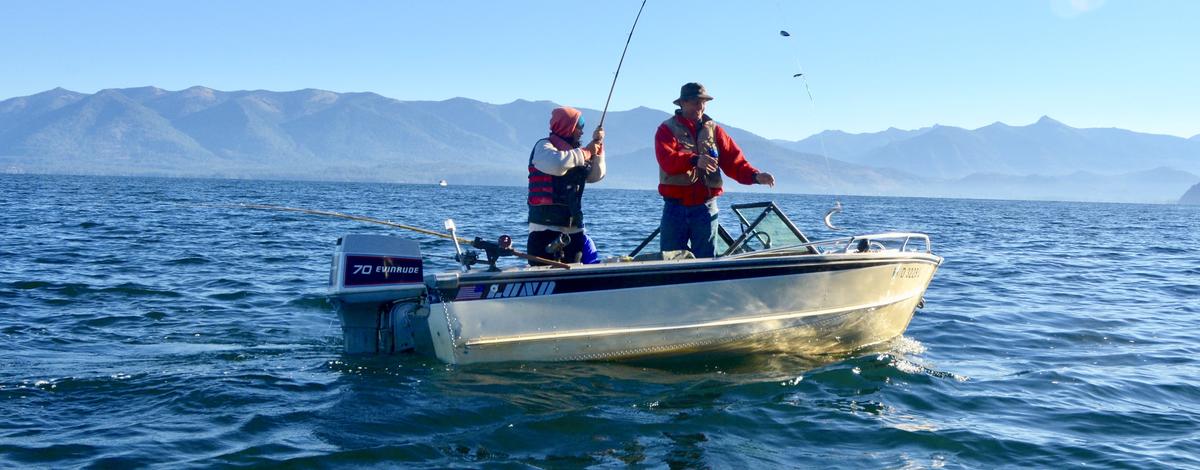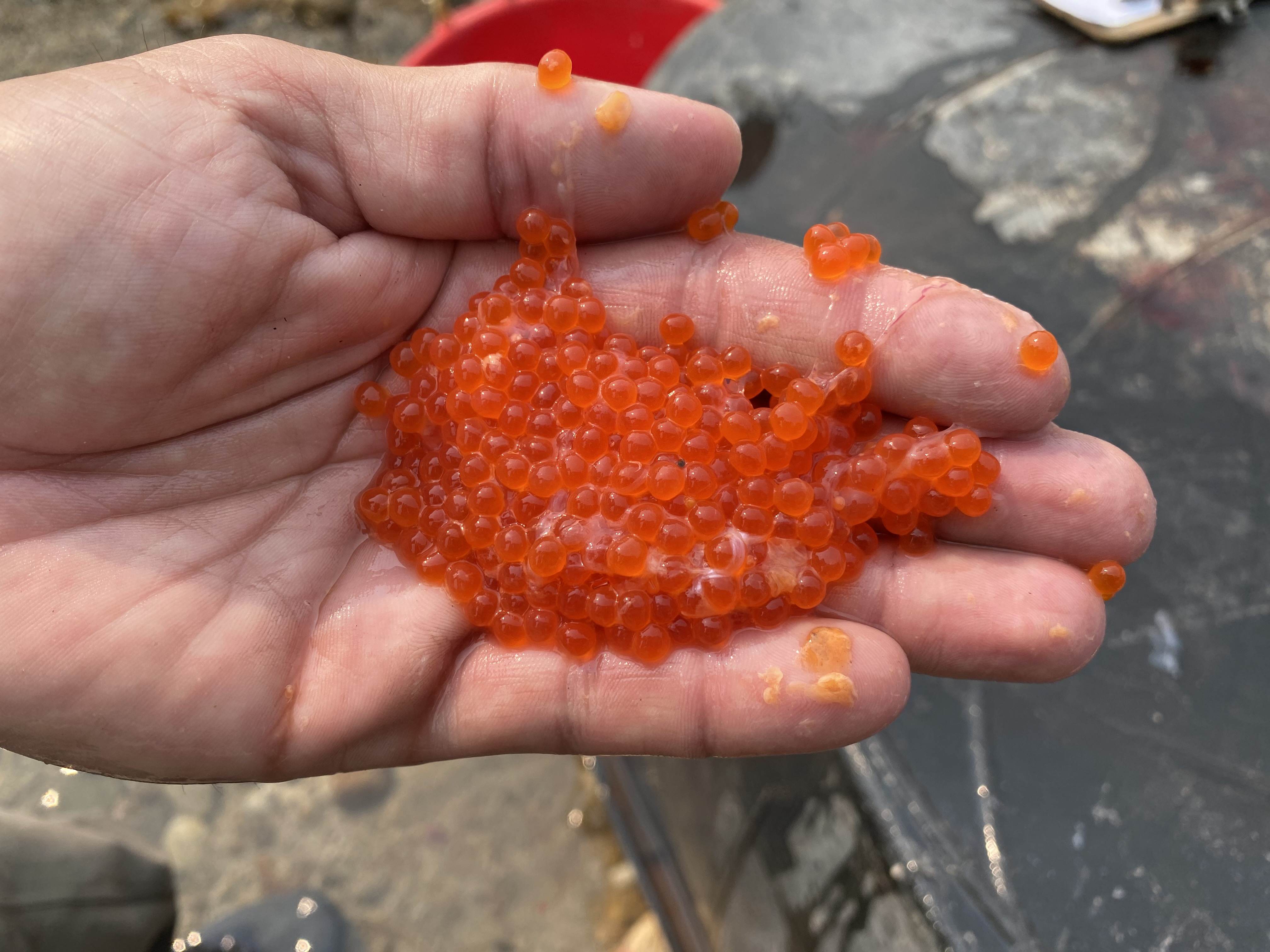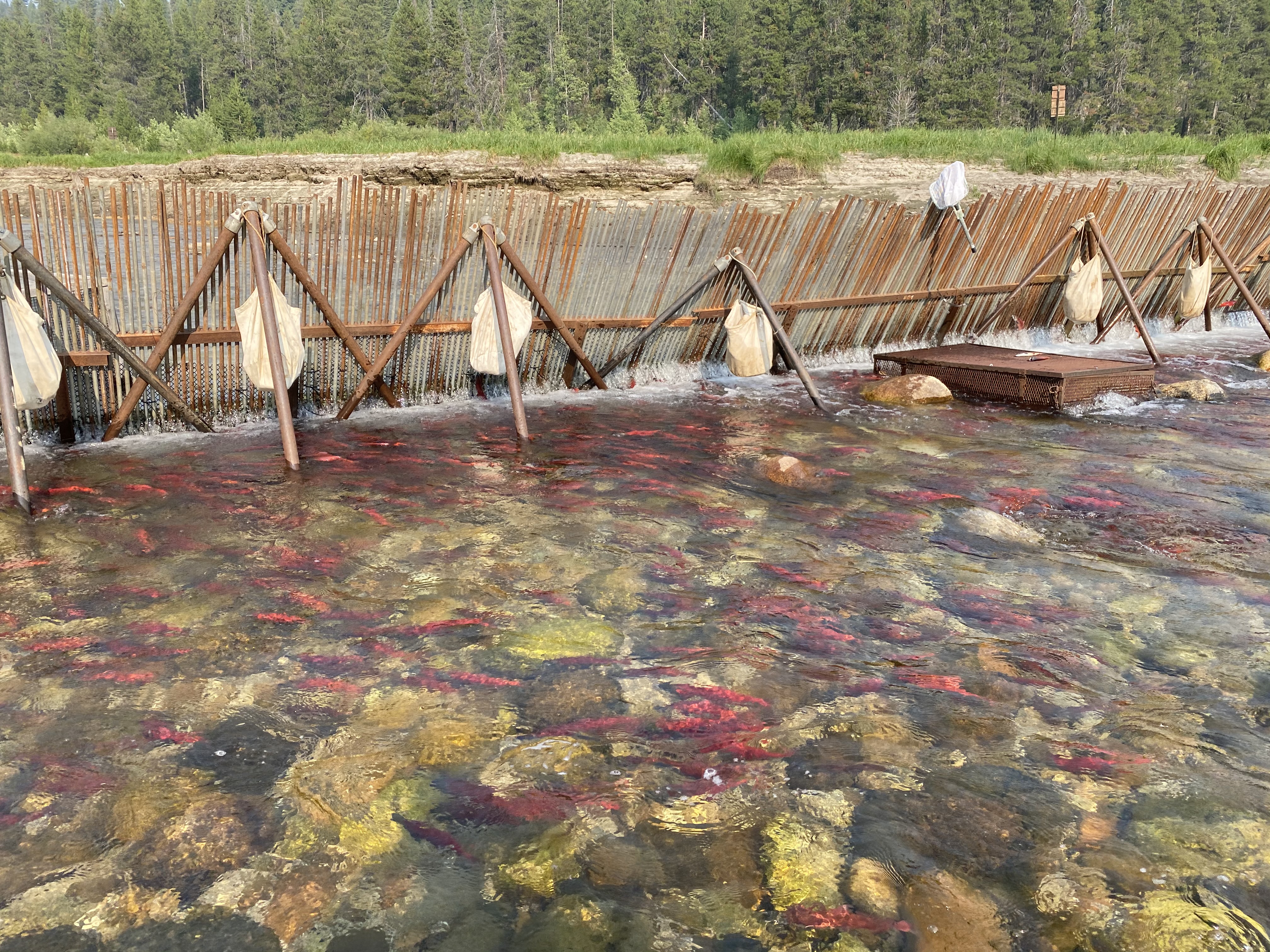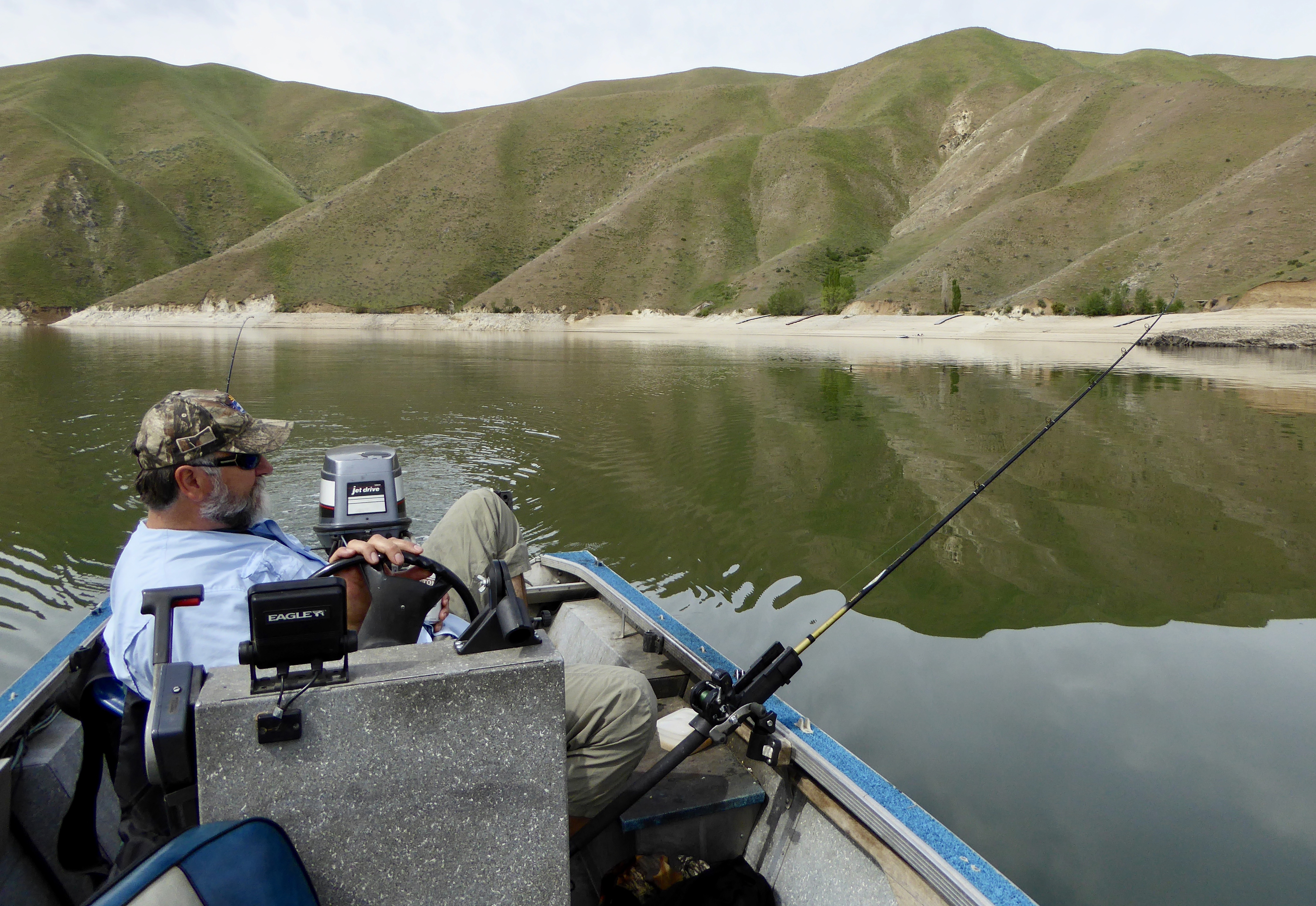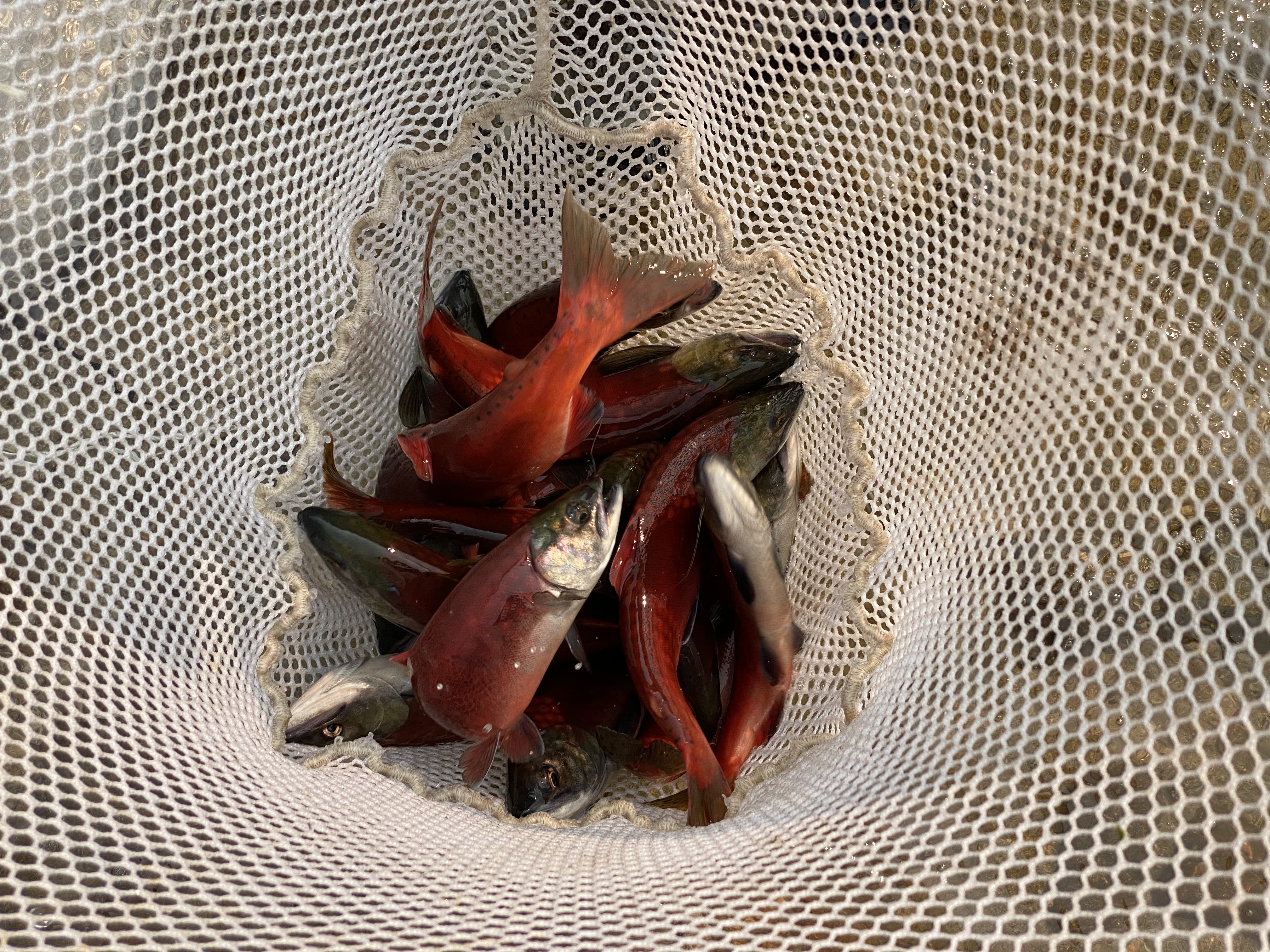It’s not just an Idaho challenge
Kokanee are notoriously challenging wherever they swim, whether in Colorado, Wyoming or British Columbia, but the factors for fluctuating populations are generally the same in Idaho, including stocking numbers, young fish survival, food production and predators.
Unfortunately, there’s rarely a “one size fits all” management approach for a successful kokanee fishery because each body of water has its own personality. Even reservoirs within the same watershed can behave differently, and they can all change over time.
Let’s look at some examples around Idaho.
Lake Pend Oreille
In the early 2000s, the kokanee population crashed in Idaho’s largest lake, and with it, a once thriving and popular kokanee and trophy rainbow trout fishery. Rather than a lack of food for kokanee, biologists identified the problem was too many predatory fish, primarily lake trout and the lake’s prized trophy rainbows.
It was another case of biologists and anglers facing hard choices, and anglers making short-term sacrifices to improve fishing over the long term.
In order to recover kokanee, the balance between predators and prey had to be restored. This required removing large numbers of lake trout and rainbow trout. What followed was a large-scale management project that included Fish and Game paying anglers to harvest lake trout and rainbow trout, as well as netting lake trout to reduce their population.
After seven years of predator removal, kokanee returned to fishable numbers, and angler effort followed. That allowed Fish and Game to resume trophy management of rainbow trout, and those prized rainbows not only returned, the fish are reaching sizes that haven’t been seen since the early 1990s.
Lake trout netting and incentivized angler harvest continues to keep predation in balance with kokanee populations. Predation management has proven to be very effective to sustain kokanee, and it will be an important part of managing the Lake Pend Oreille fishery into the future.
Deadwood Reservoir
Remember how we mentioned the classic tradeoff between fewer big fish or more small fish? Fisheries managers have been wrestling with that for decades at Deadwood Reservoir. They’ve tried to find a happy medium for what is not only a popular, high-country kokanee fishing destination, since 1986, Deadwood also served as the primary egg source for early run kokanee.
Deadwood’s history of having prolific natural kokanee production in its tributaries, and an overabundance of smaller kokanee, made it an ideal egg source for early run kokanee. Limiting the natural spawning not only helped fill Fish and Game’s hatcheries with early run kokanee fingerlings that supplied up to 20 other waters, it also made Deadwood a more desirable kokanee fishery because it raised the average size of the fish.
Around 2019, something changed at Deadwood. Fish and Game surveys detected a steep decline in kokanee numbers coming up the Deadwood River to spawn. Biologists also found that despite low numbers of kokanee, fish sizes were smaller than expected — bucking the typical pattern of larger kokanee when there’s a smaller population.
In the years since, biologists have ramped up monitoring the fishery, and kokanee sizes and densities have both remained low.
“We’ve taken a look at many factors that might contribute to decreased kokanee numbers without a concurrent increase in sizes — including predation, food limitations and water quality — and we haven’t found a smoking gun, yet,” said Regional Fisheries Biologist Tim D’Amico.
Although the answer to “why” remains elusive, fisheries managers have worked to help kokanee rebound at Deadwood by foregoing egg take from the reservoir for the last two years to maximize natural production, and even stocking additional kokanee fingerlings (sourced from eggs taken at Payette Lake) to give the fishery a boost.
Payette Lake
This deep, clear lake is fed mostly by snowmelt from granite mountains, which means limited food available for other fish. Those conditions can provide good habitat for plankton-eating kokanee because they have few competitors.
In the mid-1990s, kokanee thrived in the lake, and during fall, the North Fork of the Payette River above the lake ran red with thousands of spawning kokanee. In the early 2000s, lake trout population increased substantially, which in turn crashed the kokanee population, and the wave of spawning redfish slowed to a trickle.
Taking a page from Lake Pend Oreille’s playbook, biologists in 2014 began significantly reducing lake trout numbers, and in 2020, they started boosting kokanee by heavily stocking fingerlings. The results were almost instant.
By 2022, anglers were enjoying good kokanee fishing during summer, and in 2023, anglers harvested about 8,000 kokanee with another 3,000 spawning adults swimming up the North Fork and providing eggs for future stockings.
This is a short-term success, and time will tell if the upswing is sustainable, or part of a boom-and-bust cycle, but things are looking promising for Payette Lake’s previously dormant kokanee fishery.
Lucky Peak, Arrowrock and Anderson Ranch reservoirs
These three irrigation reservoirs in the Boise River Basin are linked to each other and receive lots of kokanee fishing effort, but they’re each managed differently.
Anderson Ranch is the farthest upstream of the three, which flows into Arrowrock, which then flows into Lucky Peak. Anderson Ranch receives stocked hatchery kokanee, and the tributaries feeding into Anderson Ranch have naturally spawning fish, which is the only of these three reservoirs with significant natural production. Because of that, Anderson Ranch has a 15-fish kokanee bag limit rather than a 6-fish limit at Lucky Peak and Arrowrock.
The fisheries at Arrowrock and Lucky Peak are driven by Fish and Game stocking and supplemented by limited natural production and entrainment (kokanee flushing through upstream dams).
Entrainment can provide challenges for fisheries managers because it varies from year to year, and it can affect kokanee fishing because too many unexpected fish in a reservoir can mean too many mouths to feed for the food available, which in turn affects average fish size and angling success. Biologists estimate that in some years, up to 80% of kokanee stocked into Arrowrock end up in Lucky Peak.
At Lucky Peak and Arrowrock, the number of anglers typically corresponds with average fish size. Angler effort increases when kokanee sizes are larger, which tends to drive up catch rates as well.
Biologists are working to better understand the variations in entrainment from year to year. Since 2020, they have marked hatchery-raised kokanee in hopes of tracking age-specific entrainment of kokanee within the three-reservoir system to learn how it affects each reservoir.

